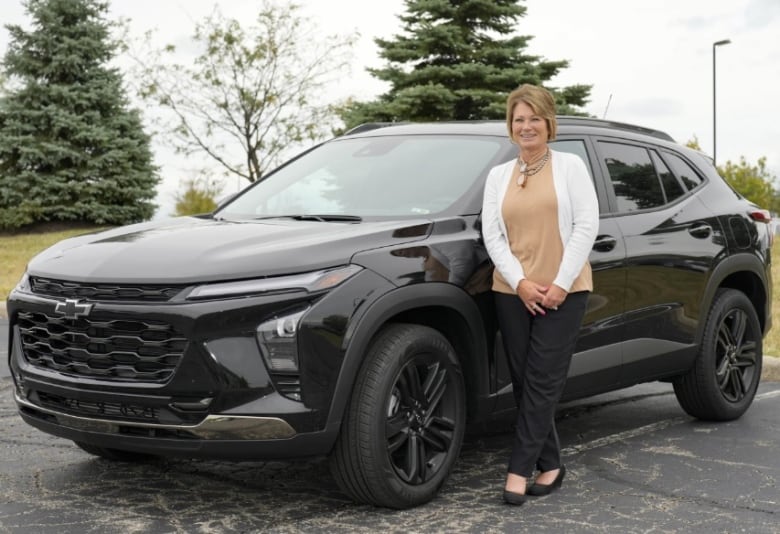
An “affordability shift” is taking root in the U.S. auto industry, according to auto analysts.
The trend is being led by people who feel they can no longer afford a new vehicle that would cost them roughly today’s average selling price of more than $47,000 US — a jump of more than 20 per cent from the pre-pandemic average.
Yet there are other buyers who could manage the financial burden but have decided it just isn’t worth the cost. And the trend is forcing automakers to reassess their sales and production strategies.
If the trend toward lower-priced vehicles proves a lasting one, more generous discounts could lead to lower average auto prices and slowing industry profits.
Had she wanted to, Michelle Chumley could have afforded a pricey new SUV loaded with options. But when it came time to replace her Chevrolet Blazer SUV, for which she’d paid about $40,000 US three years ago, Chumley chose something smaller. And less costly.

With her purchase of a Chevrolet Trax compact SUV, Chumley joined a rising number of buyers who have made vehicles in the below-average $20,000-to-$30,000 US range the fastest-growing segment of the new-auto market in the U.S.
“I just don’t need that big vehicle and to be paying all of that gas money,” said Chumley, a 56-year-old nurse in Ohio.
There are other buyers who, like Chumley, could manage the financial burden but have decided it just isn’t worth the cost. And the trend is forcing America’s automakers to reassess their sales and production strategies.
With buyers confronting inflated prices and still-high loan rates, sales of new U.S. autos rose only 1 per cent through September over the same period last year.
If the trend toward lower-priced vehicles proves a lasting one, more generous discounts could lead to lower average auto prices and slowing industry profits.
“Consumers are becoming more prudent as they face economic uncertainty, still-high interest rates and vehicle prices that remain elevated,” said Kevin Roberts, director of market intelligence at CarGurus, an automotive shopping site.
“This year, all of the growth is happening in what we would consider the more affordable price buckets.”
Under pressure to unload their more expensive models, automakers have been lowering the sales prices on many such vehicles, largely by offering steeper discounts. In the past year, the average incentive per auto has nearly doubled, to $1,812 US, according to Edmunds, an online automotive resource for consumers.
The move in buyer sentiment toward affordability came fast this year, catching many automakers off guard, with too-few vehicles available in lower price ranges. One reason for the shift, analysts say, is that many buyers who are willing to plunk down nearly $50,000 US for a new vehicle had already done so in the past few years.
People who are less able — or less willing — to spend that much had in many cases held on to their existing vehicles for years. The time had come for them to replace them. And most of them seem disinclined to spend more than they have to.
With loan rates still high and average auto insurance prices up a whopping 38 per cent in the past two years, in the U.S., “the public just wants to be a little more frugal about it,” said Keith McCluskey, CEO of the dealership where Chumley bought her Trax.